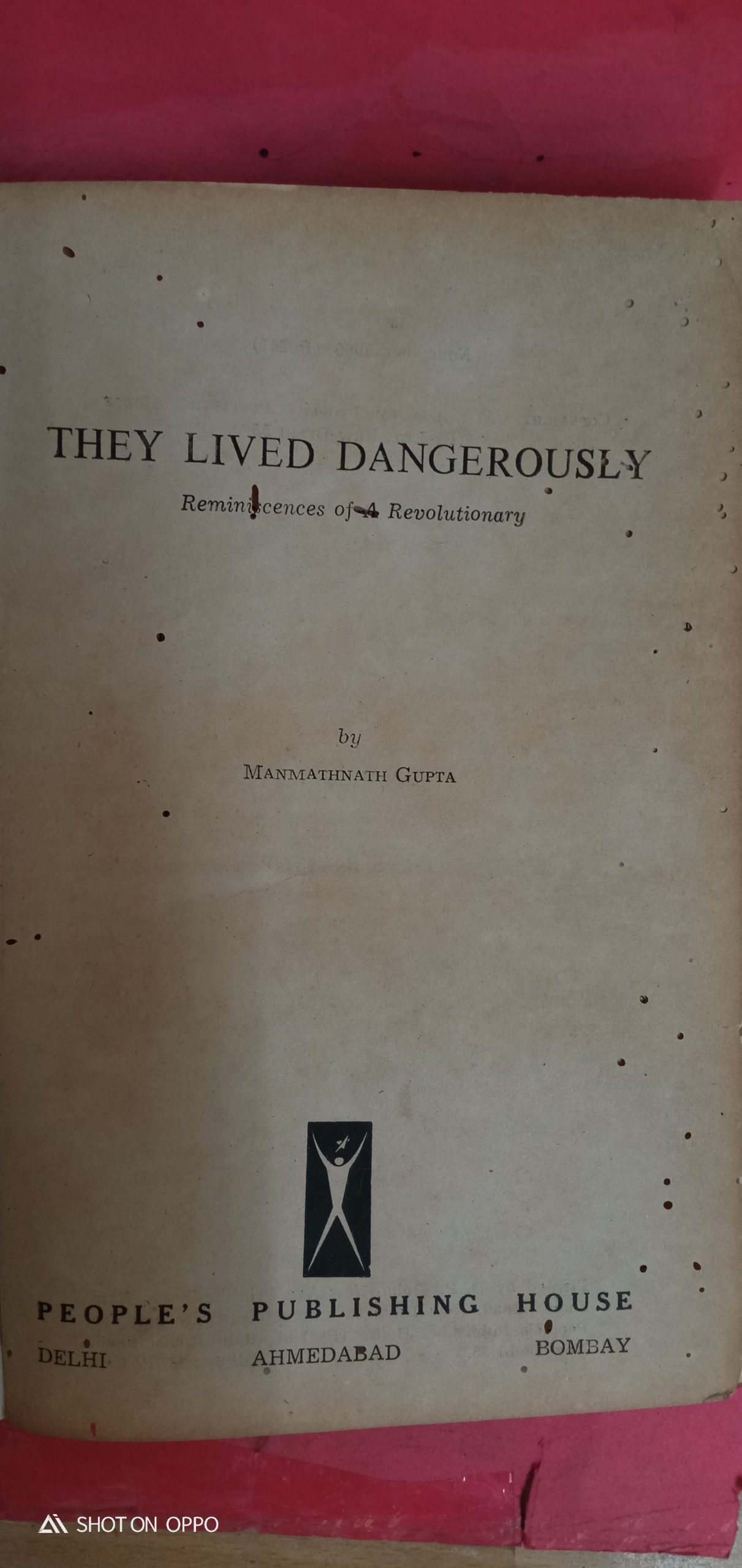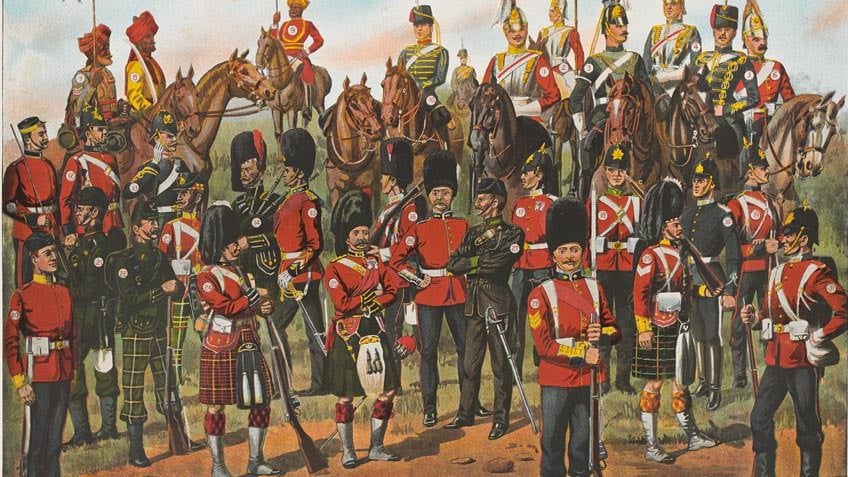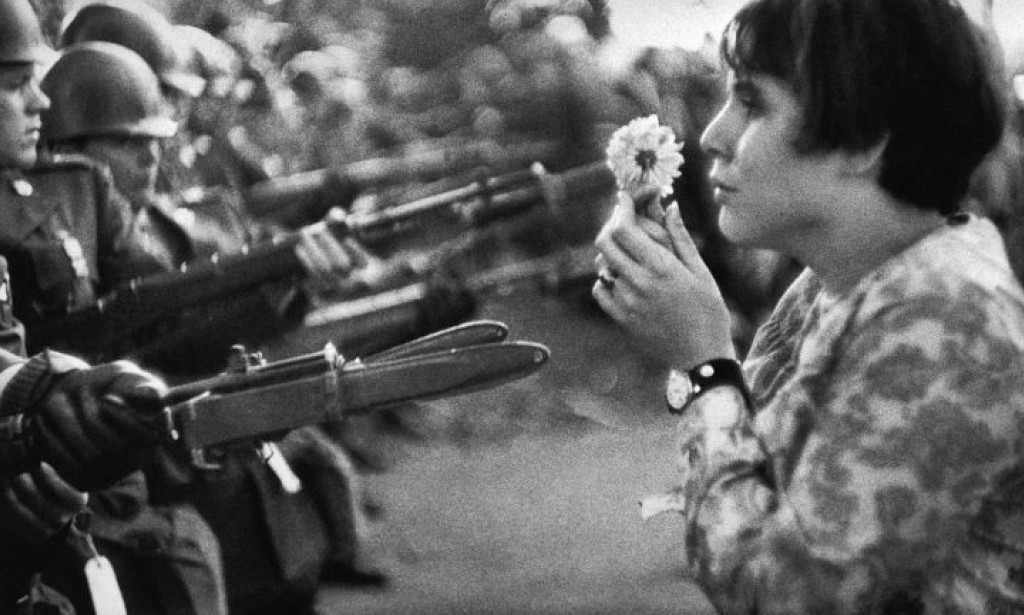“Violent delights have violent ends.” Says Friar Laurence in a conversation with Romeo. This beautiful line was a piece of advice to Romeo and Juliet as they were about to marry. Generally, it means that having an aggressive attitude even in love ends in disaster. Let’s not limit this alluring piece of advice only to the world of literature. We can contextualize it in the domain of politics as well. How should we organize our resistance movement against the system of Cain, a term coined by Ali Shariati for the oppressive class society, violently or non-violently? It is still a matter of debate.
Interestingly, one of the books that I am reading these days is ‘They Lived Dangerously: Reminiscences of A Revolutionary’ written by Manmath Nath Gupta. The writer was an Indian revolutionary who was an active member of HRA ( Hindustan Republican Association); and also participated in the Kakori train robbery being a teenager. He was too young to be hanged at that time. That’s why he received 14 years of rigorous imprisonment for participating in anti-Raj activities. So the book is quite interesting because it gives a first-hand account of the life of young revolutionaries. While reading the book, I came to know about Sachindra Nath Sanyal in more detail, a scholar from Varanasi and founder of HRA. He was also the teacher of Bhagat Singh.

In the book, the most important chapter is “An Argument or Two with Gandhi” which consists of letters exchanged by Sachindra Nath Sanyal and Mahatma Gandhi on how should we resist the British Empire. Violently or non-violently? As we know during the Indian freedom struggle, there aroused a controversy between the Young revolutionaries of HRA and Congress. The members of HRA believed in armed struggle against colonial rule but Gandhi Ji who was inspired by Leo Tolstoy, as he acknowledges in his autobiography, was a fervid advocate of non-violent resistance.
As a matter of fact, this was not only the case with the Indian freedom movement. If we look in the annals of history, the situation of other freedom movements was no different. During the Civil Rights Movement in America, we see two kinds of opposition against white supremacy. One was led by Martin Luther King who believed in non-violent resistance as he was deeply inspired by Mahatma Gandhi. On the other hand, there was Malcolm X who believed in violent armed resistance. Therefore, on 13 April 1964, he gave a historic public speech entitled “The Ballot or the Bullet” in which he warned the American ruling class that “If ballots won’t work, bullets will.” Take another example of Palestine. Two forces are working against the Israeli occupation. One is led by Dr. Mustafa Barghouti and his party Palestinian National Initiative believes in peaceful demonstrations against the Zionist regime. On the other hand, there is Hamas led by Ismail Haniyeh. They believe in the armed struggle against Israel.

The history is full of such examples. Anyhow, I was talking about Sachindra Nath Sanyal’s heated debate with Mahatma Gandhi. Sanyal wrote his first letter to Gandhi with an anonymous name which was later published in Young India on 12 February 1925. In the latter, Sanyal blamed Gandhi for failing the nation with his non-violent ideology. He wrote, “Your philosophy of non-violence, at least the philosophy that you gave to the people for their acceptance, was a philosophy arising out of despair. It was not the spirit of Kshama of the Indian rishis, it was not the spirit of ahimsa of the great Indian Yogins. It was an imperfect mixture of Toistoyism and Buddism and not a chemical mixture of East and West.” Sanyal further talked about the great people in Indian history who waged armed war against the tyrants. He wrote, “What India wants is a true leader, a leader like Guru Gobind Singh, or Guru Ramdas and Shivaji. India wants a Krishna who can give a worthy ideal, to be followed not by India alone, but by all humanity, by all the members of this humanity with diverse temperaments and capacities.”

Gandhi Ji very humbly responded to the objections. He acknowledged the spirit of the young revolutionaries against the notorious British Empire but disagreed with their method of resistance. He politely suggested to them that violent resistance only strengthens the tyrannical regime. He wrote, “…a bloody revolution will not succeed in India. The masses will not respond. A movement in which masses have no active part can do no good to them. A successful bloody revolution can only mean further misery for the masses. For it would be still a foreign rule for them. The non-violence I teach is the active nonviolence of the strongest. But the weakest can partake in it without becoming weaker.”
After this letter, Sachindra Nath Sanyal was arrested and Manmath Nath Gupta continued the debate. In response to the objections levelled by Gandhi that Indian people wouldn’t participate in the bloody revolution asked him does he believed that the revolutionaries of India were less sacrificing. In addition, Gupta wrote that through the blood of the martyr, ideas ripen quickly. Gandhi Ji in response once again saluted their patriotic benevolence but called them misguided people. He wrote, “I do believe that ideas ripen quickly when nourished by the blood of martyrs. But a man who dies slowly of jungle fever in service bleeds as certainly as the one on the gallows. And if the one who dies on the gallows is not innocent of another’s blood, he never had ideas that destroyed to ripen.” Here, we can say that Gandhi Ji’s tone is quite harsh, full of ego, and self-obsessed. Manmath Nath Gupta responded to the letter by asking Gandhi Ji some rhetorical questions. He asked him that if he believes that those who start armed resistance are misguided people then what about Guru Gobind Singh, the tenth Sikh Guru, who was a staunch believer of warfare for a noble cause? He further asked him, “What will you like to say about Washington, Garibaldi and Lenin? … will you like to call Krishna Europeanized because he believed also in the vinasha of dushkritas?”
Gandhi Ji scholarly responded to the question and ended the debate. He wrote, “In the first instance Guru Gobind Singh and the others whose names are mentioned did not believe in secret murder. In the second, these patriots knew their work and their men whereas the modern Indian revolutionary does not know his work… my Krishna is the lord of the universe, the creator, preserver, and destroyer of us all. He may destroy because he creates.”

So we can say that young revolutionaries of HRA were more passionate to get freedom and that passion urged them to take arms against the British Empire. They used to idealize only those people who advocated the armed struggle. But Gandhi Ji’s perspective was scholarly and well experienced as in his letters he, again and again, talked about the plight of the Indians who were not at all prepared for the armed struggle. One thing that surprised me while reading the letters was that when Sachindra Nath Sanyal and Manmath Nath Gupta mentioned religious personalities who took up arms against oppression, why didn’t Gandhi Ji talk about Imam Hussain’s movement of Karbala which was also non-violent against the despotic ruler Yazid. One can’t suppose that Gandhi Ji was not aware of Imam Hussain and his movement because he was a true devotee of Hussain. Well, it will remain a mystery for me.
In my opinion, non-violent resistance is more constructive than violent resistance. For this, we need to understand the institutional power of a modern state. The state institutes are more strong and well-equipped than in the past. It’s impossible to win a war against the state through violent means. It will certainly take us to the point of no return. To fight against evil with the help of evil is equivalent to supporting evil. So our young revolutionaries who are passionate about changing their country must have control over their emotions. To fight against the system, first, they need to understand the system. And this thing demands patience. If you don’t have the patience then you lose your right to be called a revolutionary.

You must be logged in to post a comment.